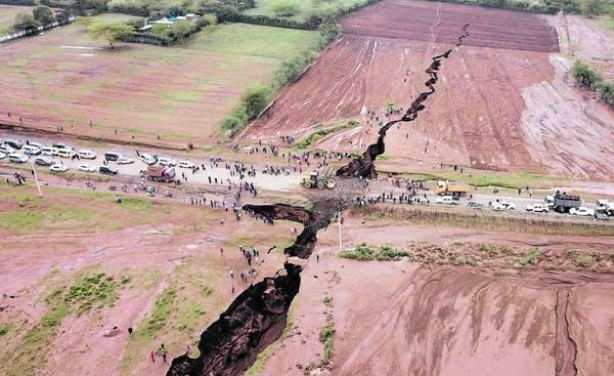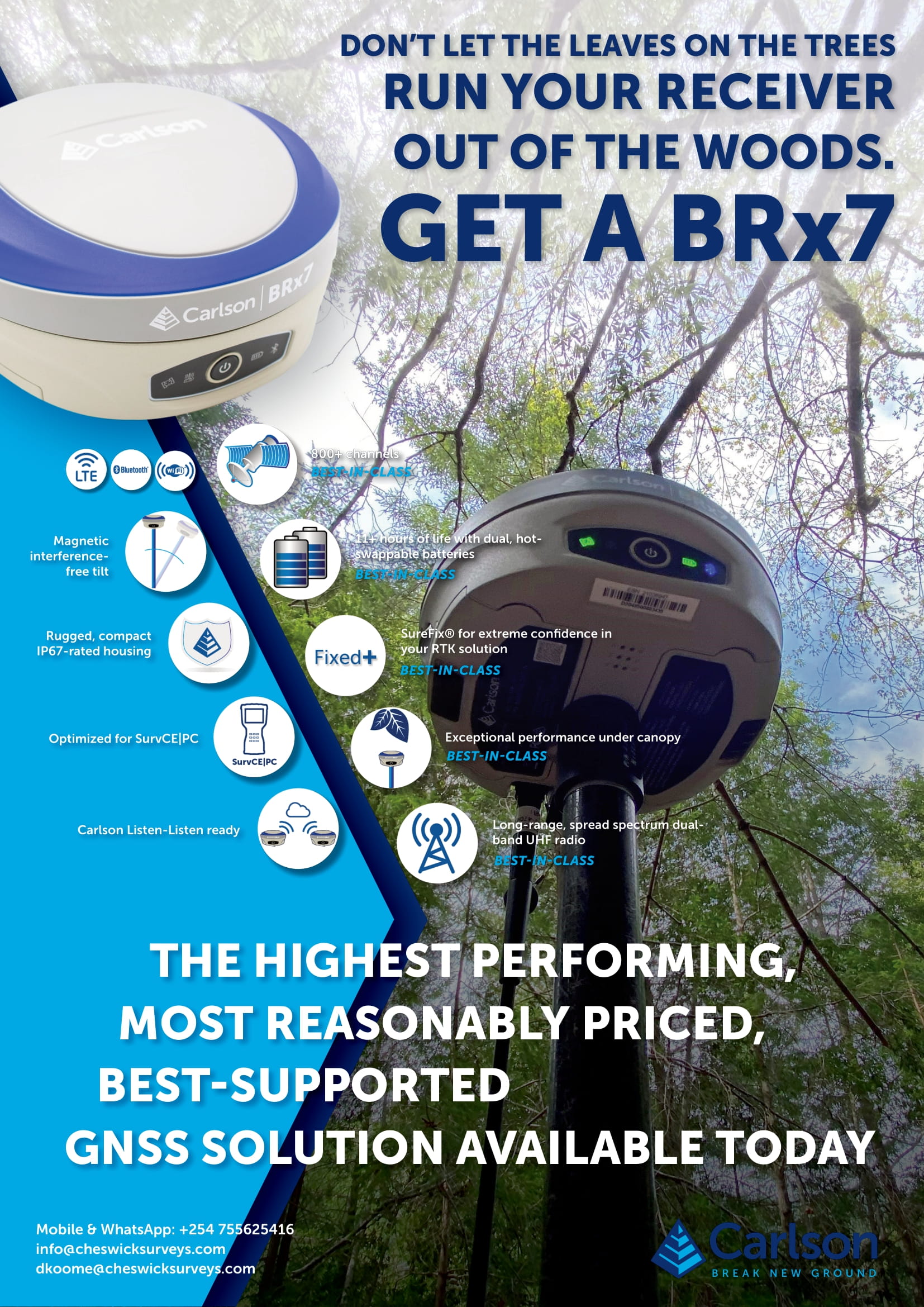In March 2018, Kenyans witnessed an interesting phenomenon. A section of a road (Mai mahiu – Narok road) was rendered impassable after it split following heavy rains that led to flooding. In true Kenyan fashion, fears were propagated in tabloids that the country was splitting into two.
Geologists were quick to respond and allay fears that no splitting was happening. The explanation given was that deep seated volcanic ash from the surrounding volcanic Mt Longonot area had been washed away leaving a four meter wide by six meter deep gulley. The gulley extended up to 3 kilometers.
There was a subtle chest-thumping by the geologists who claimed that the road was built without their consultation. Had they been involved during the feasibility phase, they would have advised against building the road under deep underground fault lines.
Despite the conclusion that splitting of the country was not possible in a short span of time, one geologist alluded to the need for an investment in research in the affected areas. If indeed the country was splitting, it would occur at a rate of 1mm in a period of a million years or so, the claim was made.
In my opinion the best way to be sure would be to do actual measurements using Global Navigation Satellite Systems (GNSS) technology. This would involve installing Continuously Operating Reference Systems (CORS) stations, not only in the affected area, but across the country hence forming a nationwide CORS network.

These stations continuously log GNSS observables and are able to detect even the slightest movements of tectonic plates or other underground movements. Since the Suswa fault was caused by heavy rain flooding out deposits of volcanic ash, a CORS network can also be used to model the atmosphere (troposphere and ionosphere) over Kenya contributing to atmospheric studies and more accurate weather predictions.
Countries like Japan that experience earthquakes more often are so advanced in their CORS network that studies resulting from those installations can adequately predict the next earthquake.
Currently, according to CORSMAP (www.corsmap.com), there are only four publicly known CORS in the country. Three are run by institutions and one by an individual. Kenya Power, the country’s sole power distributor, is said to have 19 CORS stations distributed across towns in Kenya. However this investment is for the company’s own private use and little is known about it. They might be irked that I have this information.
Since Kenya has not experienced natural disasters by way of earthquakes of 7.0 ritcher scale, there has been little concern about the need to study the country’s seismic activity. Countries like Japan that experience such kind of disasters more often are so advanced in their CORS network that studies resulting from those installations can adequately predict the next earthquake.
From the Suswa fault line incident, it is now becoming evidently clear that the clamor to have CORS installation across the country is not an item agenda for surveyors only but for geologists and meteorologists as well.
One of the victims of the fault line which extends three kilometers, spoke of how his house started splitting when they were enjoying dinner in the evening. They immediately scampered for safety and with assistance from neighbors managed to save their belongings. Unfortunately, they could not save the house which was subsequently ‘swallowed’ by the unfolding fault line.
To prepare better for these kind of incidents, let’s see how we can kick start the conversation to install a comprehensive CORS network for our country. Should workshops be conducted to help us better understand this technology? Mind you, professionals and experts in this area are not lacking. If all universities and research institutions had one such installation, we would have covered good ground already.
Talk to me in the comments section below. What do you think?




